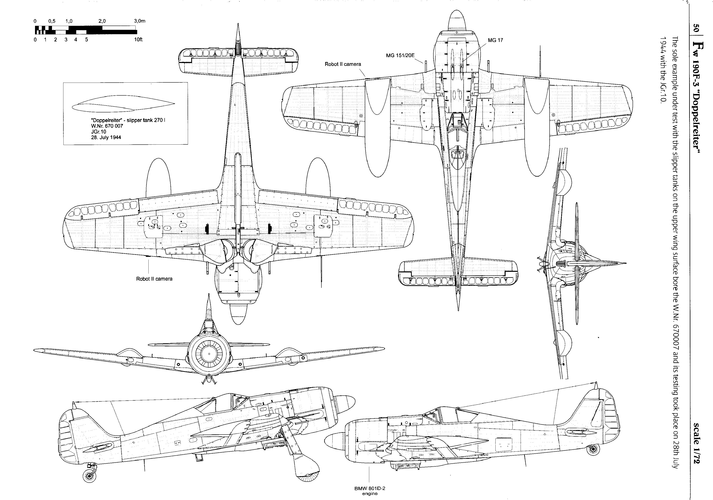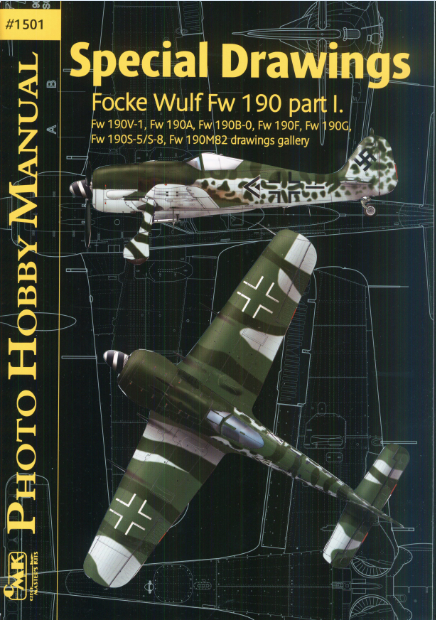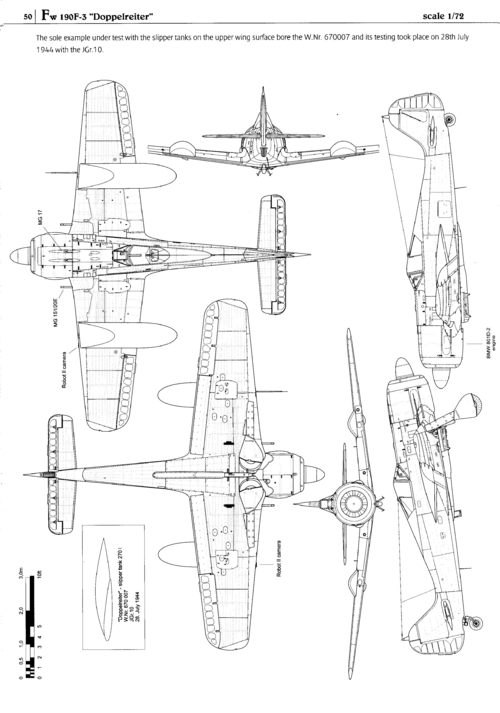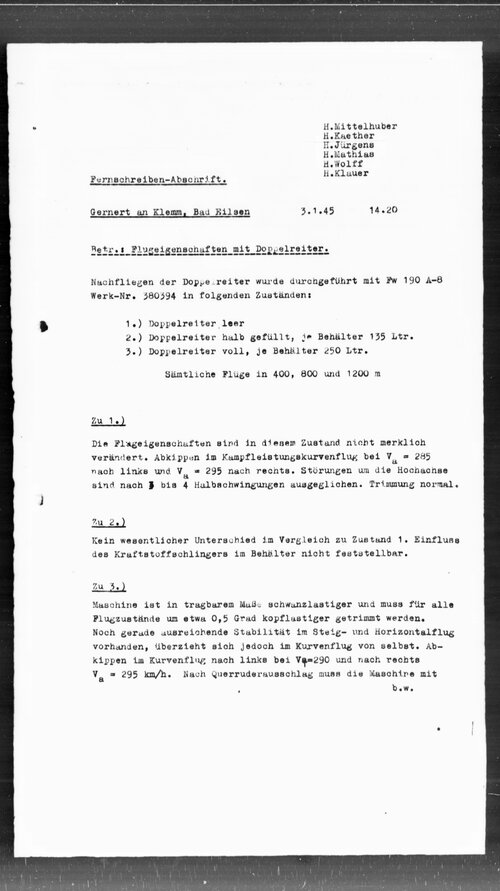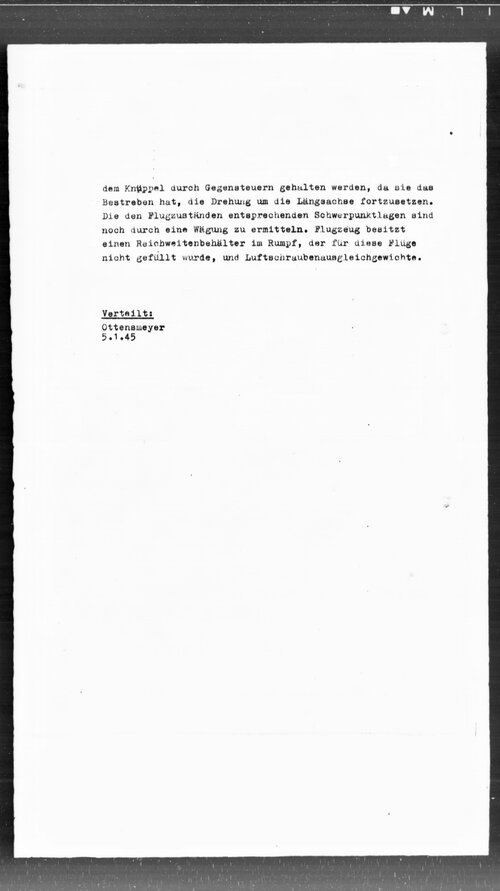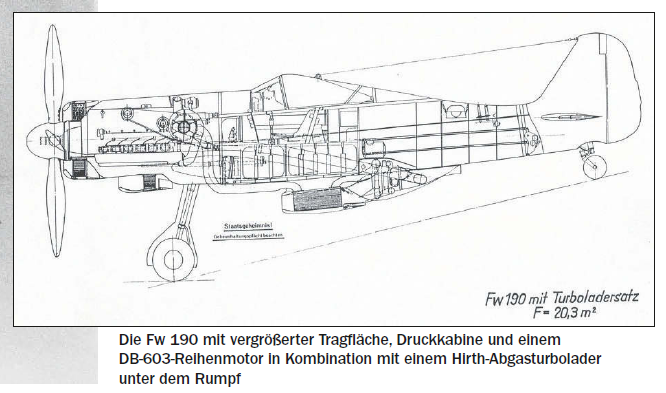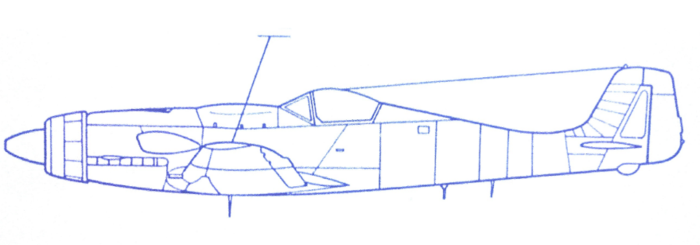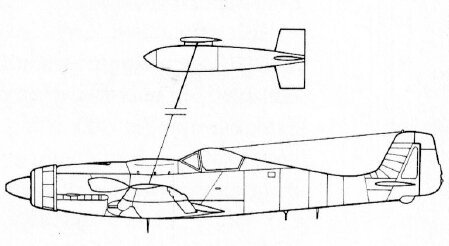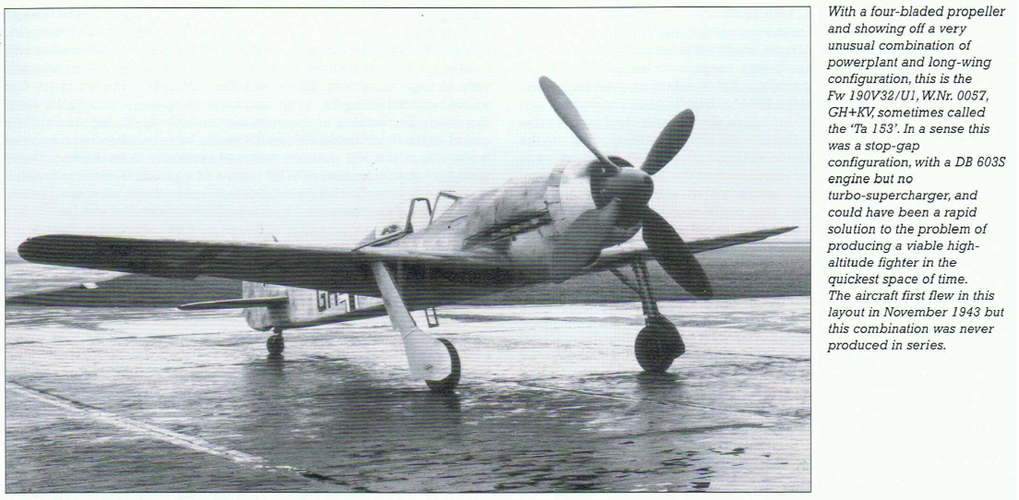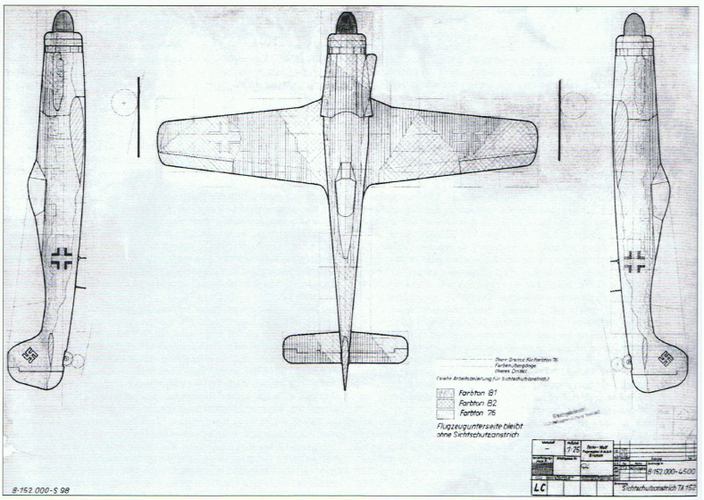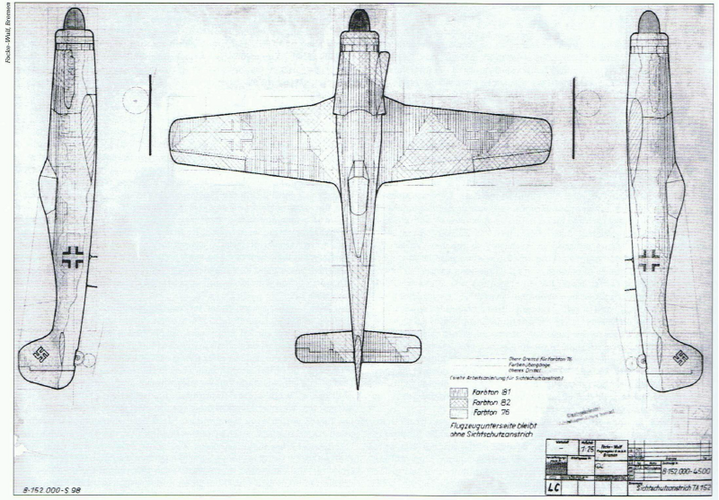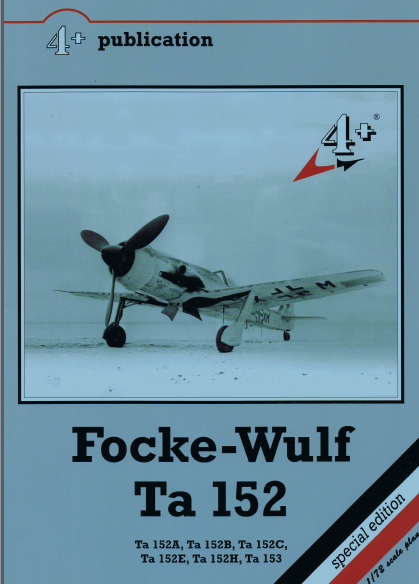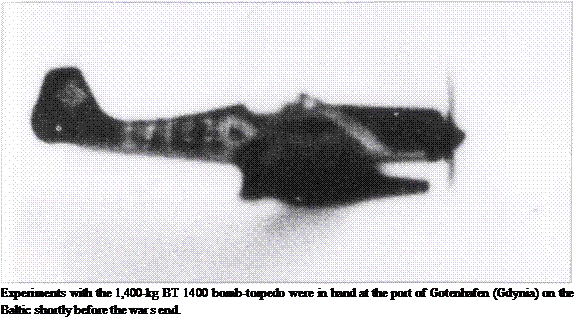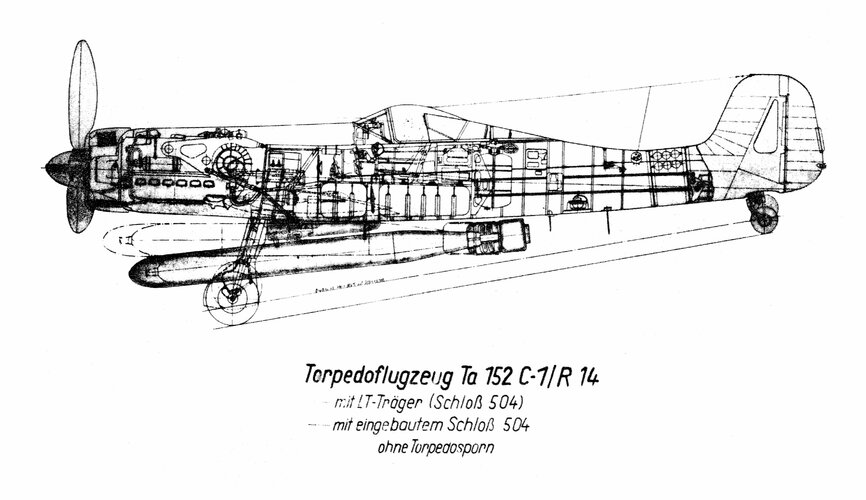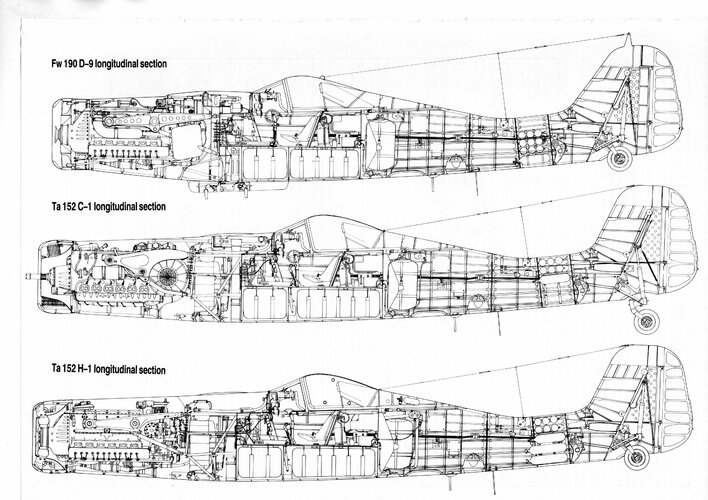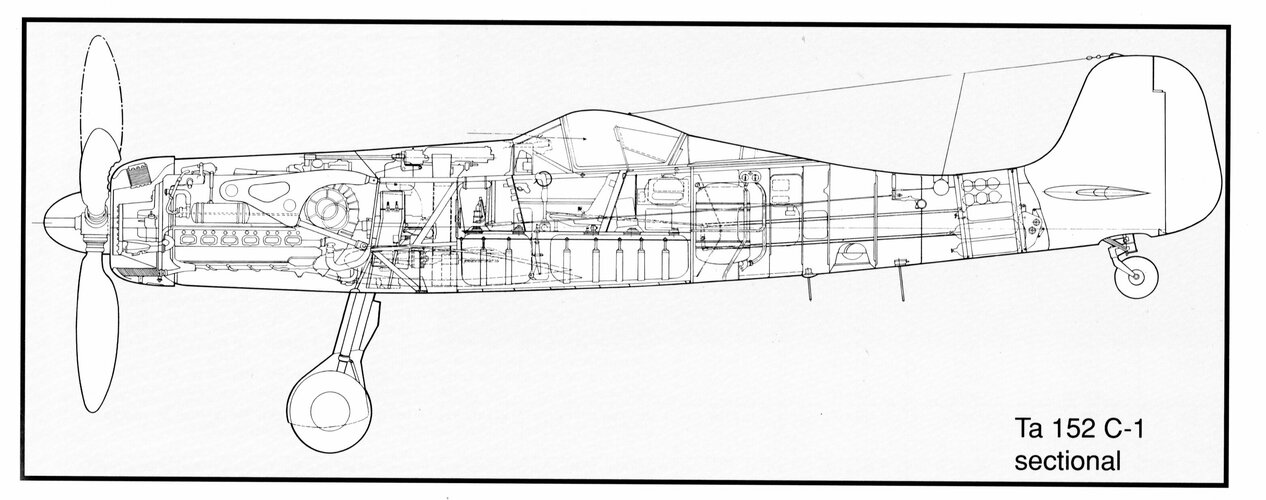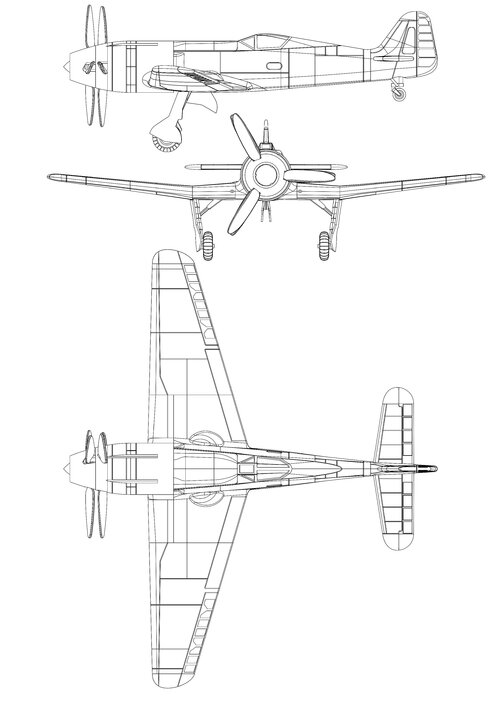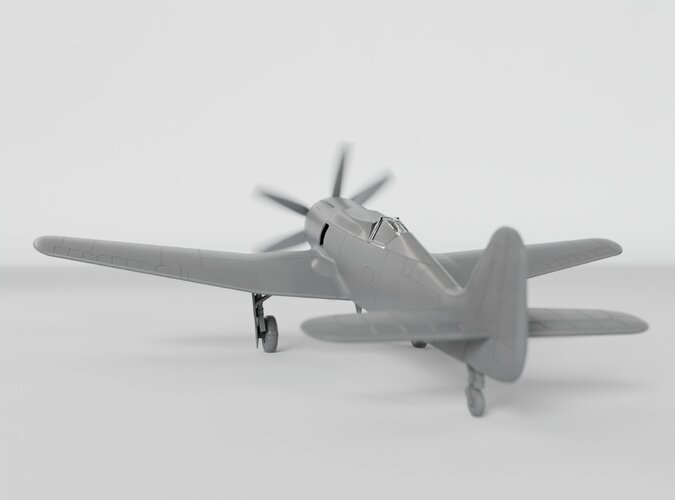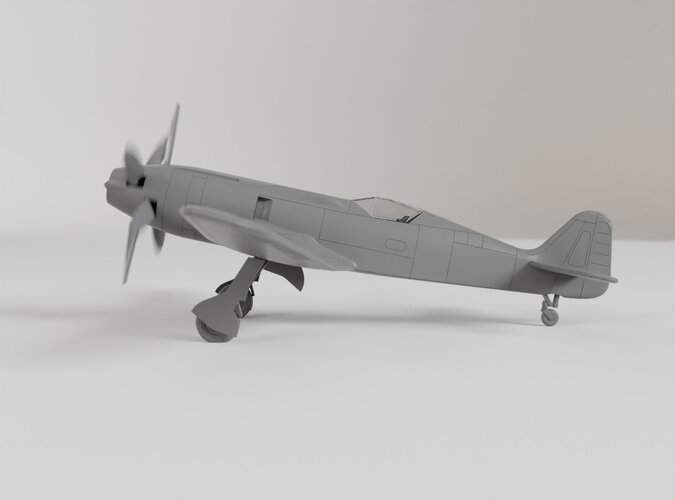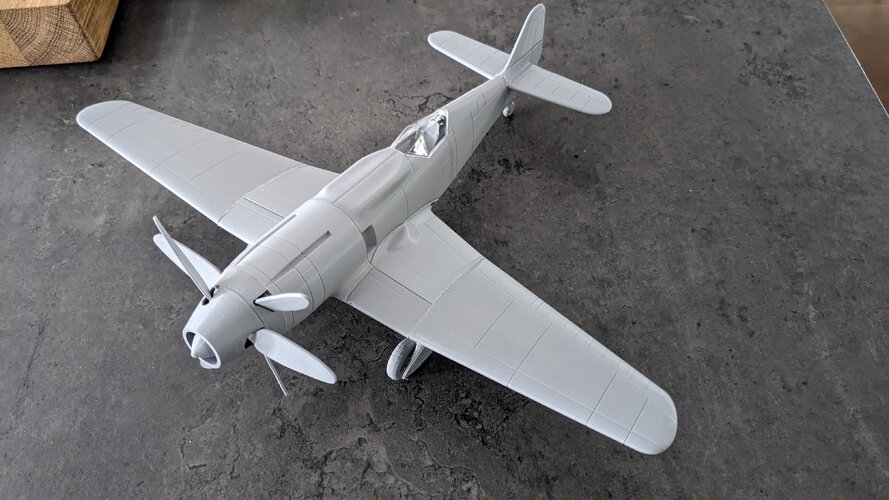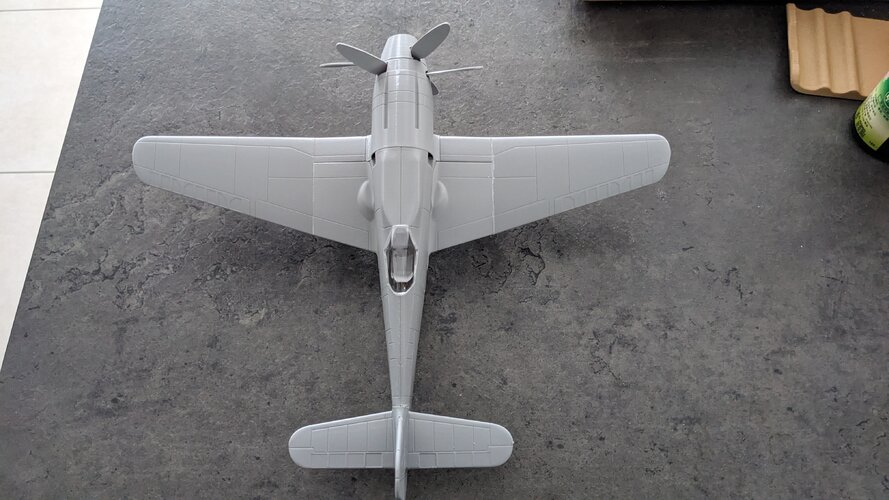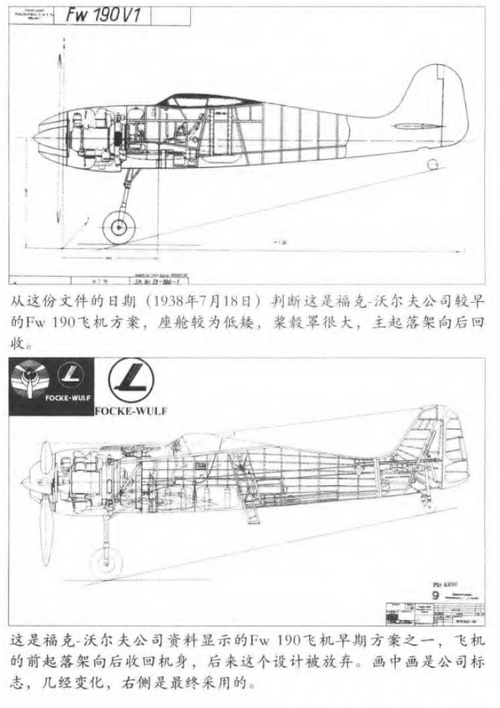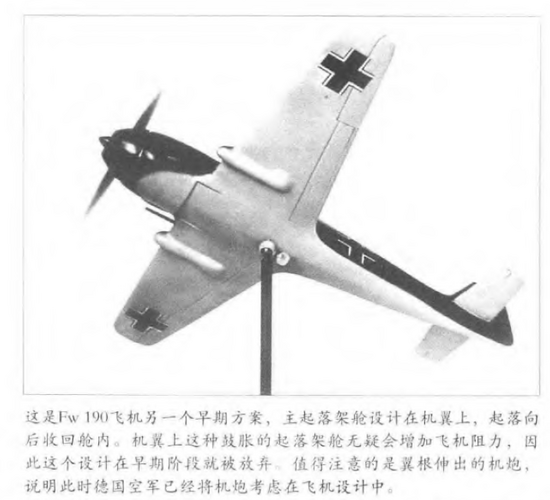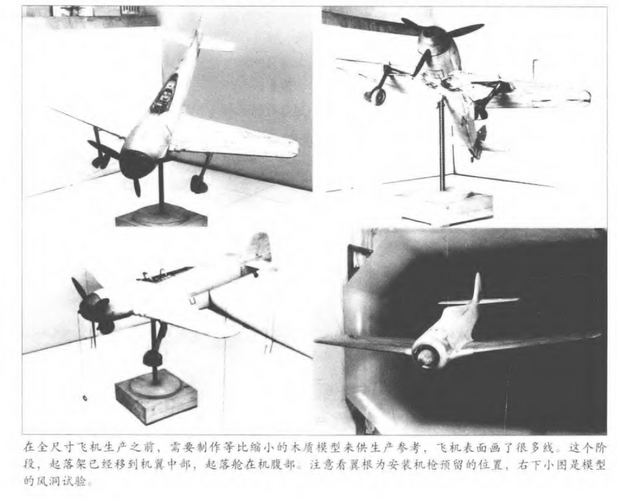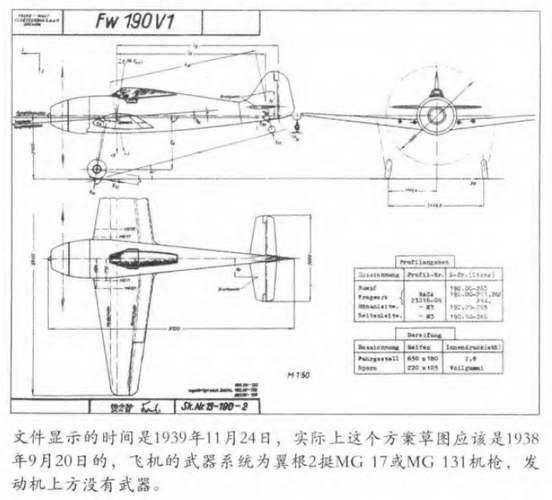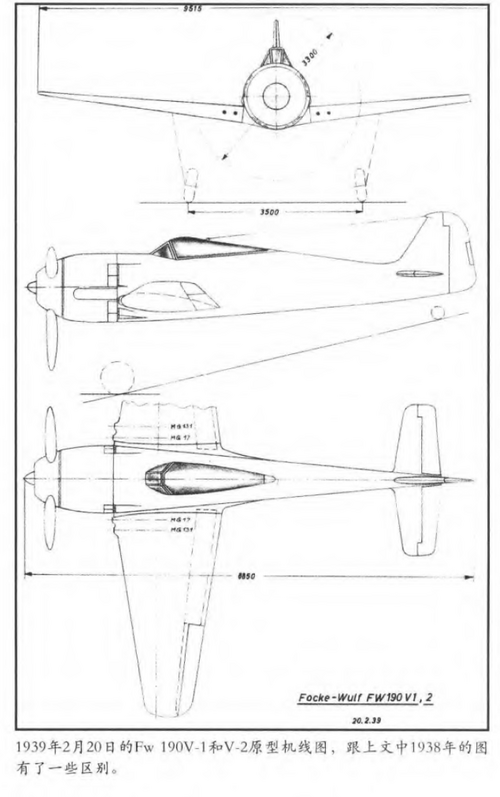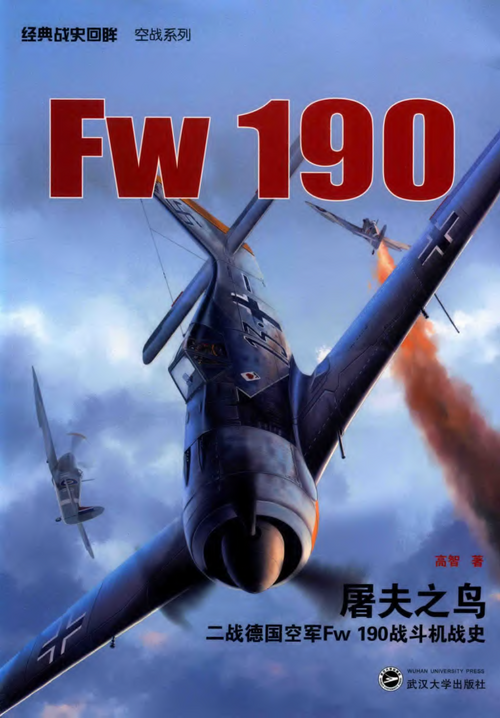You are using an out of date browser. It may not display this or other websites correctly.
You should upgrade or use an alternative browser.
You should upgrade or use an alternative browser.
Focke Wulf Fw 190 / Ta 152 Projects & Variants
- Thread starter Justo Miranda
- Start date
richard B
ACCESS: Secret
- Joined
- 17 August 2006
- Messages
- 343
- Reaction score
- 498
perttime
I really did change my personal text
- Joined
- 30 March 2013
- Messages
- 311
- Reaction score
- 318
As can be seen in the image, the artist is Claes Sundin.
His books can be found here: http://luftwaffeinprofile.se/ and here: http://centurabooks.com/index.php?route=product/category&path=59
Thanks for that!
Is there any way to find out what aircraft types are covered in each one of his many books?
- Joined
- 11 June 2014
- Messages
- 1,542
- Reaction score
- 2,901
it's the Werk Nummer of this Fw 190 (top of the page)View attachment 644504Was that a Drawing number or serial number (670007) ?.
I don't think Werk-Nr. 670007 was the sole Fw 190 tested with Doppelreiter tanks. The initial design and testing does seem to have been carried out by FGZ and E-Stelle Travemuende with JGr. 10 but it would appear that Focke-Wulf carried out its own tests on the tanks in January 1945 with Fw 190 A-8 Werk-Nr. 380394.
Attachments
- Joined
- 3 June 2006
- Messages
- 3,094
- Reaction score
- 3,966
Just for your information,
as an answer by the editor to a customer letter, published on page 97 in the latest issue of the German magazine "FliegerRevue X Magazine Nr 87 2020", it is mentioned, that a British aviation historian (better known to us as Dan Sharp) recently discovered a report from 1944-02-01, that Focke Wulf planned to marry a Ta 152 airframe with a British Napier Sabre engine.
That engineering drawing, which is originally published in Dan's bookazine "Luftwaffe: Secret Projects of the Third Reich profiles", is also shown.
But the source of that drawing published on page 97 in FliegerRevue X #87 is from a collection of Mr. Uwe. W. Jack.
as an answer by the editor to a customer letter, published on page 97 in the latest issue of the German magazine "FliegerRevue X Magazine Nr 87 2020", it is mentioned, that a British aviation historian (better known to us as Dan Sharp) recently discovered a report from 1944-02-01, that Focke Wulf planned to marry a Ta 152 airframe with a British Napier Sabre engine.
That engineering drawing, which is originally published in Dan's bookazine "Luftwaffe: Secret Projects of the Third Reich profiles", is also shown.
But the source of that drawing published on page 97 in FliegerRevue X #87 is from a collection of Mr. Uwe. W. Jack.
- Joined
- 11 June 2014
- Messages
- 1,542
- Reaction score
- 2,901
Just for your information,
as an answer by the editor to a customer letter, published on page 97 in the latest issue of the German magazine "FliegerRevue X Magazine Nr 87 2020", it is mentioned, that a British aviation historian (better known to us as Dan Sharp) recently discovered a report from 1944-02-01, that Focke Wulf planned to marry a Ta 152 airframe with a British Napier Sabre engine.
That engineering drawing, which is originally published in Dan's bookazine "Luftwaffe: Secret Projects of the Third Reich profiles", is also shown.
But the source of that drawing published on page 97 in FliegerRevue X #87 is from a collection of Mr. Uwe. W. Jack.
Thanks for alerting me to this fightingirish. It is very curious. I went and bought a copy of FliegerRevue X #87 from the magazine website. The drawing is indeed credited to Uwe W. Jack's collection.
I discovered the report in September 2017 but didn't publish anything on it at that time. Luftwaffe: Secret Projects of the Third Reich, detailing the Focke-Wulf report and including the drawing in question, came out in August 2019. It did not include a reference for exactly where the original report could be found.
FliegerRevue X acknowledges that I discovered the Focke-Wulf report - it was never mentioned by anyone else, as far as I can tell, during the 73 years between the point at which the report was produced and the point at which I found it. And there have been a lot of people who have written about the Ta 152 in the interim. None of them discovered the report, or if they did they kept it to themselves, which seems unlikely to me.
The first moment that FliegerRevue could have reasonably become aware of my discovery was August 2019. But they couldn't reasonably have known where I found the report. I didn't tell anyone.
Even if you knew which of the 2000 or so T-2 microfilm reels it was on, it would have been difficult to get hold of a copy before NASM stopped processing microfilm orders in early 2020.
The drawing printed by FliegerRevue is clearly from the same source as 'my' drawing (see the unedited raw image below, which appears exactly as it was scanned). Note the lighter areas above the engine and just in front of the cockpit. These are also present in the FliegerRevue drawing. Different settings on a different scanner might have eliminated these 'white spots'.
When the drawing was originally photographed for microfilming, it was placed on a black background to make the details stand out better. This resulted in a black area visible above the uppermost edge of the drawing. I edited most of this black border out for inclusion in the bookazine, so no one would have been aware of it if they hadn't seen the original. The FliegerRevue drawing has a white area extending above the drawing. The lower and right hand edges of the FliegerRevue drawing have been edited to chop off the line which runs through the centre of the aircraft to the right and also to remove the upper part of the cockpit canopy from the design below, which ought to intrude into the view they show, but doesn't.
It would be interesting to know whether Mr Jack can cite the source of the drawing in his collection. Surely, if he had the report before me then he ought to be acknowledged as its discoverer. Acquiring the report after I published it, without knowing the file reference, would have been... very difficult.
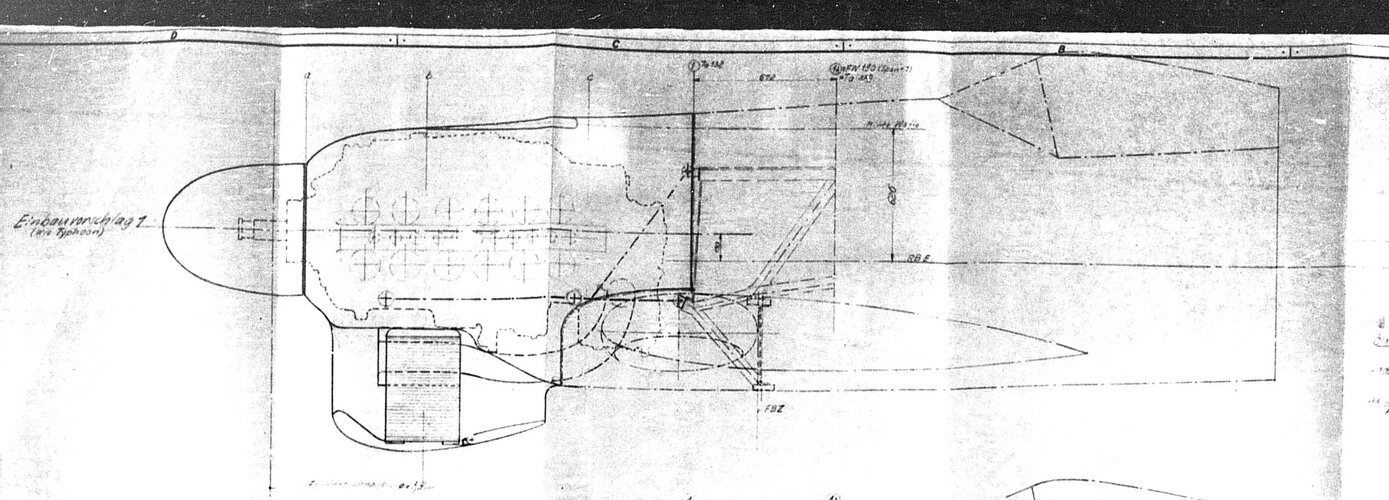
Last edited:
- Joined
- 9 October 2009
- Messages
- 21,976
- Reaction score
- 13,638
- Joined
- 11 March 2006
- Messages
- 8,625
- Reaction score
- 3,806
That slanting line, pointing upwards made me think, that I've recently saw this drawing, et voilà !
Found it in "Der Flugzeugschlepp" (aerotow) by Ernst Peter, but you're right, I think, it probably was
shown in Kens/Nowarra "Die deutschen Flugzeuge 1933 - 1945", too, to illustrate the way, the Gotha
P.57 gliding bomb would have been towed.
And that may be an answer to your question, too, that drawing was just meant to illustrate the P.57,
not the Ta 152, so the author paid no attention to that drawing. The way, it is distorted, reminds me
on a photograph with a fisheye lens, easy to achieve today with digital picture editing, but in the times,
Heinz J.Nowarra wrote his books, rather an error during the production of that book ?
Bad thing about it is, that it easily can bring up theories, that there was a version/projetc of the Ta 152,
with an obviously different nose, so different engine, because it's shown by Nowarra ...
Found it in "Der Flugzeugschlepp" (aerotow) by Ernst Peter, but you're right, I think, it probably was
shown in Kens/Nowarra "Die deutschen Flugzeuge 1933 - 1945", too, to illustrate the way, the Gotha
P.57 gliding bomb would have been towed.
And that may be an answer to your question, too, that drawing was just meant to illustrate the P.57,
not the Ta 152, so the author paid no attention to that drawing. The way, it is distorted, reminds me
on a photograph with a fisheye lens, easy to achieve today with digital picture editing, but in the times,
Heinz J.Nowarra wrote his books, rather an error during the production of that book ?
Bad thing about it is, that it easily can bring up theories, that there was a version/projetc of the Ta 152,
with an obviously different nose, so different engine, because it's shown by Nowarra ...
Attachments
That slanting line, pointing upwards made me think, that I've recently saw this drawing, et voilà !
Found it in "Der Flugzeugschlepp" (aerotow) by Ernst Peter, but you're right, I think, it probably was
shown in Kens/Nowarra "Die deutschen Flugzeuge 1933 - 1945", too, to illustrate the way, the Gotha
P.57 gliding bomb would have been towed.
And that may be an answer to your question, too, that drawing was just meant to illustrate the P.57,
not the Ta 152, so the author paid no attention to that drawing. The way, it is distorted, reminds me
on a photograph with a fisheye lens, easy to achieve today with digital picture editing, but in the times,
Heinz J.Nowarra wrote his books, rather an error during the production of that book ?
Bad thing about it is, that it easily can bring up theories, that there was a version/projetc of the Ta 152,
with an obviously different nose, so different engine, because it's shown by Nowarra ...
Yours is the actual drawing. And good reasoning about how it might have had come to be.
I just changed it and cut the P.57 because I thought about a scratchbuild of this thing.
Last edited:
Has there ever been a Ta 152 with TWO rear fuselage drum plugs? I seem to recall have seen/read about it once.
It was to correct the lateral flight instability which emerged despite the larger vertical stabilizer.
It was to correct the lateral flight instability which emerged despite the larger vertical stabilizer.
I think the photo is real, because it was published in the book 'Stuka' long before Photoshop and other digital image programs came along. I also think its a 190D series (look at the tail, fuselage extension, and the nose). It's been mislabeled as a A-series for years. Both the Fw-190D.12 and the Ta-152C were flight tested to see if they could carry the BT 700 and BT 1400 bomb-torpedo without stability problems.????dora or 190 or fake?

Jabos and Blitzbombers - Aviation - airports, aircraft, helicopters ...
O ffensive operations were naturally to the forefront in Luftwaffe tactical thinking. In view of the enemy superiority piston-engined aircraft such as the Ju 87 and Fw 190 were ever less suitable to relieve pressure on German troops and to strike hard at the enemy. Knowing this Hider had decided...ourairports.biz
A typo would be indicated by the "typo" being made only once but this "typo" as you suggest has appeared numerous timesWith 20,5 m, span would have been doubled, resulting in a kind of F-104- to U 2 modification.
I think, it's a typo and meant was wing area.
Grzesio
ACCESS: Secret
No, it's a radial engined Fw 190 - position and size of the canopy proves it beyond all doubts (I actually overlayed Fw 190 plans and photos on this picture). The BT is closest to the BT 700 A as far as its size is concerned.I also think its a 190D series (look at the tail, fuselage extension, and the nose). It's been mislabeled as a A-series for years.
The same typos can happen multiple times, depending on the typist's habits. I only have a job because computers make typos easy to correct. Mote "teh" in my output that "the".A typo would be indicated by the "typo" being made only once but this "typo" as you suggest has appeared numerous timesWith 20,5 m, span would have been doubled, resulting in a kind of F-104- to U 2 modification.
I think, it's a typo and meant was wing area.
I agree. Plus there is no telltale plug in the fuselageNo, it's a radial engined Fw 190 - position and size of the canopy proves it beyond all doubts (I actually overlayed Fw 190 plans and photos on this picture). The BT is closest to the BT 700 A as far as its size is concerned.I also think its a 190D series (look at the tail, fuselage extension, and the nose). It's been mislabeled as a A-series for years.
Why would the Ta 152H get a wing of an enormous span of 14.44 m when a 12.3 m wing might have sufficed? The former "grew" at the wing roots, the latter at the tip.hohenjäger 2 drawing:

There are original documents about the difficulties of the Ta 152's flight stability and the proposals to improve it. The extent of this issue is not very well-known I assume.
On the German Flugzeugforum the member and owner Junkers-Peter and posted them. You have to sign up on the forum to see them though there:
 www.flugzeugforum.de
www.flugzeugforum.de
Here is a translation into English I made. It's chronological;
"Both the first production aircraft of version H and the model aircraft of version C have insufficient stability over the longitudinal and lateral axes.
As an immediate measure, the head of TLR therefore decided to reduce the fuel supply by 70-80 liters. and the entrainment of only 70 liters MW 50 instead of 100 liters suggested (this only with regard to the longitudinal axis?)
The head of TLR was subsequently informed that in order to achieve perfect stability around the transverse axis in the first series aircraft (H), it was necessary to attach approx. 58 kg of ballast to the engine and the fuel content of the rear tank of 360 ltr. to be restricted to 280 liters.
However, it is not possible to attach the ballast to the engine.
Chief TLR therefore proposes not to install the GM-1 installation, especially since the proper functioning of the pressurized cabin is still in question. The ballast on the engine and the fuel restriction could then also be omitted (in this case).
A meeting with the E-Stelle (Test Center) Rechlin showed that this proposal by the head of TLR would, in the opinion of the E'Stelle Rechlin, not be a remedy .
The E-Stelle also stated: The vertical axis stability of the 8-152 H is just sufficient. However, according to the shooting school, shooting approaches are not possible. A slight improvement occurs with the help of the course (direction) control K-23.
Rechlin suggested a different stretch (aspect-ratio?) of the fin to Focke Wulf as a remedy and sketches for it were handed over to Focke Wulf.
Transverse axis stability is poor for both C and H.
In principle, these instabilities around the transverse axis can be eliminated by:
Abandonment of course control K-23
Abandonment of GM-1 installation
Abandonment of 115 liters tank
Abandonment of FuG 185
Reduction of the fuel supply by 135 ltr.
Such a waiver, not even the smallest reduction in the fuel supply, can under no circumstances be approved!
In addition, when carrying out these measures, a top-heaviness near the ground would have to be accepted.
Fundamental measures were discussed:
a) Enlarging the horizontal stabilizer by adding edge caps
b) Modification of the wing transition to the fuselage to achieve better flow conditions
c) Engine pitch forward 0.5° further
d) Try to move all the weights further forward if possible
e) to compensate for the ballast of 13.5 kg previously required in the rear with a wooden tail
An aircraft with the above difficulties is unusable for troop deployment.
A complete remedy seems possible only with fundamental means."
On the German Flugzeugforum the member and owner Junkers-Peter and posted them. You have to sign up on the forum to see them though there:
Fragen zur Dora/152
Korrekt, Peter. Ich habe Fotos von den Beschussversuchen. Die wurden in Frankreich durchgeführt. Wenn gewünscht, fotografiere ich die mal flink ab. Ein (!) guter Treffer mit 30mm Mine reichte, um einen Bomber abzuschießen.
Here is a translation into English I made. It's chronological;
"Both the first production aircraft of version H and the model aircraft of version C have insufficient stability over the longitudinal and lateral axes.
As an immediate measure, the head of TLR therefore decided to reduce the fuel supply by 70-80 liters. and the entrainment of only 70 liters MW 50 instead of 100 liters suggested (this only with regard to the longitudinal axis?)
The head of TLR was subsequently informed that in order to achieve perfect stability around the transverse axis in the first series aircraft (H), it was necessary to attach approx. 58 kg of ballast to the engine and the fuel content of the rear tank of 360 ltr. to be restricted to 280 liters.
However, it is not possible to attach the ballast to the engine.
Chief TLR therefore proposes not to install the GM-1 installation, especially since the proper functioning of the pressurized cabin is still in question. The ballast on the engine and the fuel restriction could then also be omitted (in this case).
A meeting with the E-Stelle (Test Center) Rechlin showed that this proposal by the head of TLR would, in the opinion of the E'Stelle Rechlin, not be a remedy .
The E-Stelle also stated: The vertical axis stability of the 8-152 H is just sufficient. However, according to the shooting school, shooting approaches are not possible. A slight improvement occurs with the help of the course (direction) control K-23.
Rechlin suggested a different stretch (aspect-ratio?) of the fin to Focke Wulf as a remedy and sketches for it were handed over to Focke Wulf.
Transverse axis stability is poor for both C and H.
In principle, these instabilities around the transverse axis can be eliminated by:
Abandonment of course control K-23
Abandonment of GM-1 installation
Abandonment of 115 liters tank
Abandonment of FuG 185
Reduction of the fuel supply by 135 ltr.
Such a waiver, not even the smallest reduction in the fuel supply, can under no circumstances be approved!
In addition, when carrying out these measures, a top-heaviness near the ground would have to be accepted.
Fundamental measures were discussed:
a) Enlarging the horizontal stabilizer by adding edge caps
b) Modification of the wing transition to the fuselage to achieve better flow conditions
c) Engine pitch forward 0.5° further
d) Try to move all the weights further forward if possible
e) to compensate for the ballast of 13.5 kg previously required in the rear with a wooden tail
An aircraft with the above difficulties is unusable for troop deployment.
A complete remedy seems possible only with fundamental means."
Last edited:
- Joined
- 19 July 2016
- Messages
- 4,279
- Reaction score
- 3,464
The image in post 333 looks like an anular radiator on an in line powered variant to me.
BT1850 - weighed 4239 pounds, warhead was 2315 pounds. Length was 15.3 feet, diameter was 2 feet.Do you think that Ta 152C1/R14 could carry BT 1850 torpedo?
On April 1, 1945, the Schlachtgeschwader SG104, operating inside Tutow airfield with airplanes Ju 87D and Fw 190 F-8, was disbanded. Its 1,200 men were ordered to participate in the defence of Berlin acting as ground troops. But a group of pilots decided to use the ten latest available aircraft on Totaleinsatz (near-suicides) missions against bridges over the Oder River on 16 of April. They probably used the Fw 190 F-8 loaded with a bomb SC 500, although some sources indicate that they actually were Bf 109 fighters.
At that time the 3./KG200 had some Fw 190 F-8/R15 with extended tailwheel leg, capable of carrying a BT 1400 torpedo-bomb under the belly using an ETC 502 rack. It is possible that they were also used against the bridges in S.O. missions along with some Misteln. On March 7, several aircraft of the Nachtschlachgruppe NSG20, under the command of the major Kurt Dahlmann, made S.O. attacks against the bridge of Remagen, resulting in their destruction. They used some Fw 190 G-1 that had been specially modified with Schloss 2000 bomb racks capable of carrying a bomb SC1800. The modification included the installation of strengthened tires and shock absorbers with increased pressure. Much standard equipment was removed, including the MG 151/20 cannons.
The modified Fw 190 G-1 needed a take-off strip of 1,200 m and could carry fuel for the one way flight only. On June 9, 1944, the KG200 was equipped with modified aircraft Fw 190 G-1 to carry a bomb SB 1000 in Totaleinsatz missions. The project was frozen by the OKL until April 17, 1945, when some surviving pilots of the 5./KG200 Leonidas, under the command of the lt.col. Heiner Lange, carried out S.O. missions against the bridges over the Oder and Neise rivers, operating from the Jüteborg airfield.
- Joined
- 3 June 2006
- Messages
- 3,094
- Reaction score
- 3,966
Hi folks,
I highly recommend all German understanding members the newest issue, now part seven, of the German bookazine "Flugzeug Classic Extra - Focke-Wulf Fw 190", which has interesting articles and pictures about unbuilt projects and prototypes of the Focke-Wulf Fw 190 D-9 to D-15. B)
This newest issue was only published this Monday, and I bought my copy at my newsagent near my local train station after work.
The e-book version as a PDF of this bookazine will be also soon if not already be available.
The drawings are again from the artist H.Ringlstetter at Aviaticus.
Here the content:

Part eight and probably the final part of this series will be about the Focke-Wulf Ta 152 projects and prototypes. IMHO this future issue will be published in August 2024.
Links (German):

 www.flugzeugclassic.de
www.flugzeugclassic.de
 www.geramond.de
www.verlagshaus24.de/flugzeug-classic-extra
www.geramond.de
www.verlagshaus24.de/flugzeug-classic-extra
I highly recommend all German understanding members the newest issue, now part seven, of the German bookazine "Flugzeug Classic Extra - Focke-Wulf Fw 190", which has interesting articles and pictures about unbuilt projects and prototypes of the Focke-Wulf Fw 190 D-9 to D-15. B)
This newest issue was only published this Monday, and I bought my copy at my newsagent near my local train station after work.
The e-book version as a PDF of this bookazine will be also soon if not already be available.
The drawings are again from the artist H.Ringlstetter at Aviaticus.
Here the content:
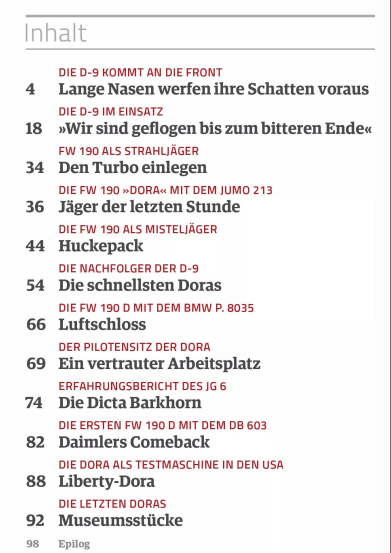
Part eight and probably the final part of this series will be about the Focke-Wulf Ta 152 projects and prototypes. IMHO this future issue will be published in August 2024.
Links (German):

Flugzeug Classic Extra
 www.flugzeugclassic.de
www.flugzeugclassic.de
Flugzeug Classic Extra 19/23
 www.geramond.de
www.geramond.de
- Joined
- 3 June 2006
- Messages
- 3,094
- Reaction score
- 3,966
Hello, I highly doubt it, since the torpedo bomber Fw 190 D-12/R14 only started in late 1944. At that time the German aircraft carrier program was abandoned, so like the Fw 190 A-5/U14 the Fw 190 D-12/R14 would have been only stationed at land bases.Could be Ta 152 C1/R14 used as carrier-borne aircraft?
napobona
ACCESS: Restricted
- Joined
- 19 July 2016
- Messages
- 4,279
- Reaction score
- 3,464
Very sharp mate, did a great job on it.
napobona
ACCESS: Restricted
- Joined
- 8 March 2009
- Messages
- 1,056
- Reaction score
- 1,299
This is labeled as the 801-tf but perhaps this is the 801e? The page style looks like Flugzeug Classic but I have no idea what issue this is.
from; https://forum.il2sturmovik.com/topic/73233-fw190a-vs-fw190d9-high-alt-performances/

And a side view of a 190 with a 801tf
from; https://www.bilibili.com/read/cv24133568/

from; https://forum.il2sturmovik.com/topic/73233-fw190a-vs-fw190d9-high-alt-performances/
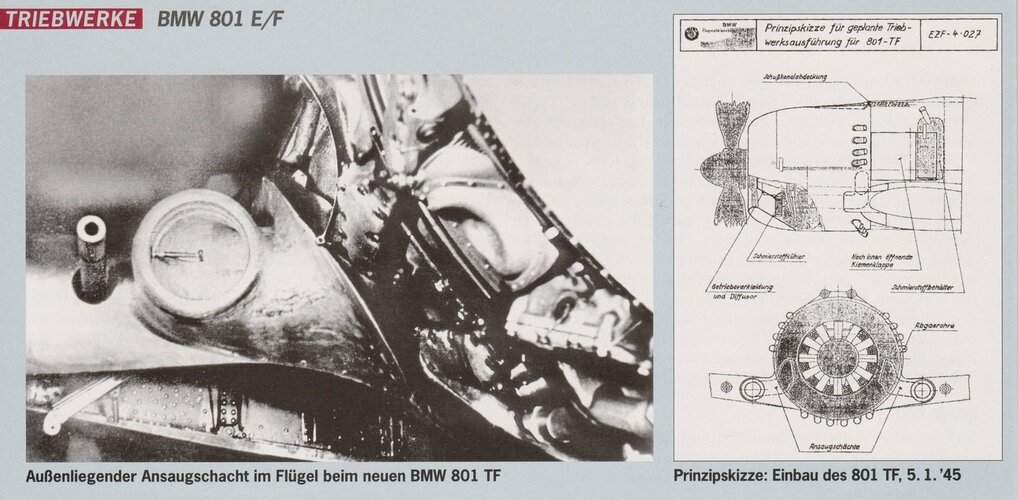
And a side view of a 190 with a 801tf
from; https://www.bilibili.com/read/cv24133568/
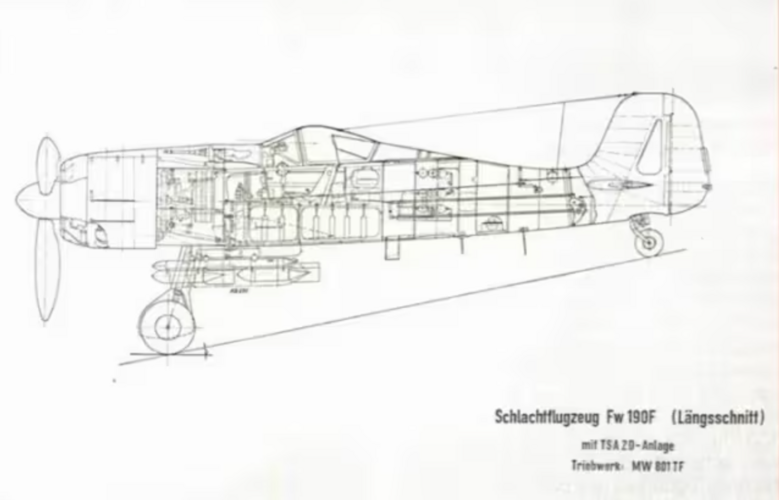
Hi Tomo,
I'm sure the relevant issue is sitting right here on my bookshelf, but as Flugzeug Classic never published comprehensive table of contents, I have no way to find it except by going through each individual issue.
I do remember the article though, it was published quite a long time ago.
Regards,
Henning (HoHun)
@HoHun - can you perhaps add any info wrt. the possible publication the picture of the BMW 801 TF is taken from, as posted in the post above?
I'm sure the relevant issue is sitting right here on my bookshelf, but as Flugzeug Classic never published comprehensive table of contents, I have no way to find it except by going through each individual issue.
I do remember the article though, it was published quite a long time ago.
Regards,
Henning (HoHun)
Hi Tomo,
You could try Flugzeug Classic Extra Nr. 6, which might have the relevant article reprinted:
No guarantees, though.
Regards,
Henning (HoHun)
@HoHun - can you perhaps add any info wrt. the possible publication the picture of the BMW 801 TF is taken from, as posted in the post above?
You could try Flugzeug Classic Extra Nr. 6, which might have the relevant article reprinted:
No guarantees, though.
Regards,
Henning (HoHun)
Thank you.Hi Tomo,
You could try Flugzeug Classic Extra Nr. 6, which might have the relevant article reprinted:
No guarantees, though.
Regards,
Henning (HoHun)
I've taken a peek, unfortunately no cigar \:
- Joined
- 3 June 2006
- Messages
- 3,094
- Reaction score
- 3,966
Hi Tomo,This is labeled as the 801-tf but perhaps this is the 801e? The page style looks like Flugzeug Classic but I have no idea what issue this is.
from; https://forum.il2sturmovik.com/topic/73233-fw190a-vs-fw190d9-high-alt-performances/
[...]
And a side view of a 190 with a 801tf
from; https://www.bilibili.com/read/cv24133568/
I double-checked all seven issues of the German aviation magazine "Flugzeug Classic Extra - Focke Wulf Fw 190/Ta 152" regarding the Focke Wulf Fw 190F with the engine BMW 801 TF. Unfortunately, that article must be from a regular monthly issue of "Flugzeug Classic". Like HoHun, it would take me time going through each individual issue I have in my shelfs, either here in my office or in my basement.
During the following weekends, I might spend some time searching for that specific article.

